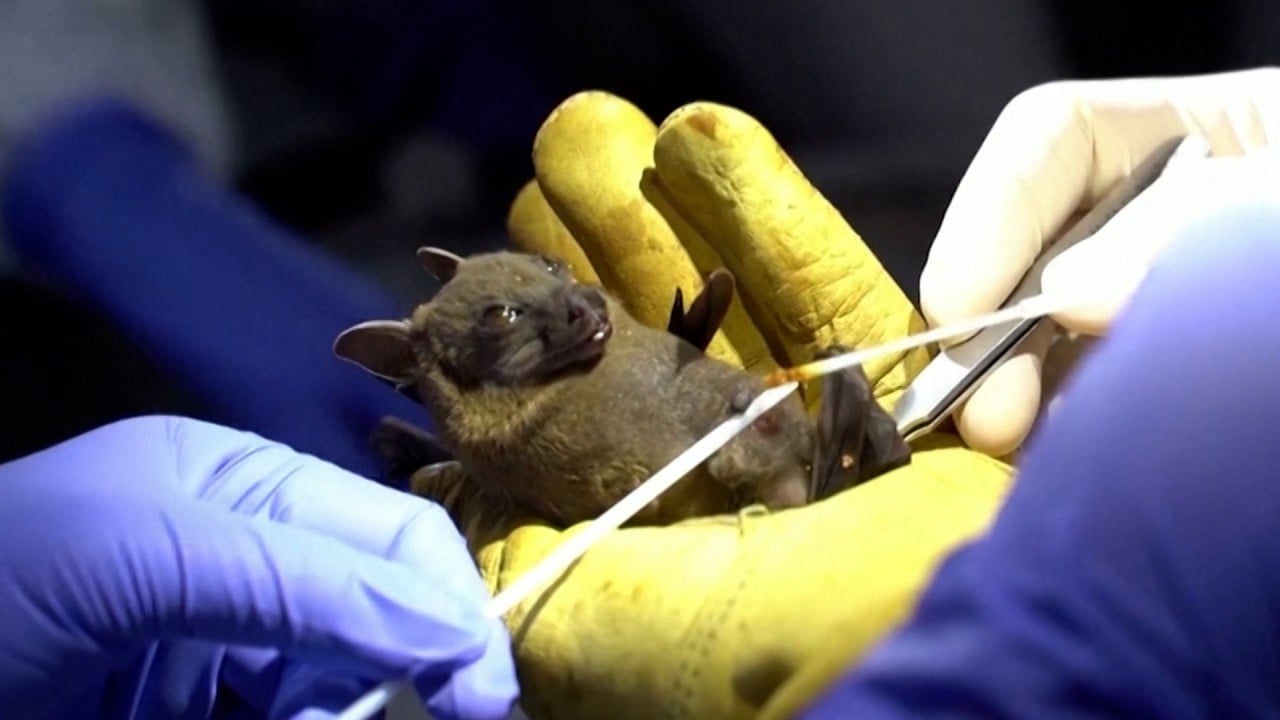
Covid-19: bat species must be clearly defined if scientists are to trace virus origins, researchers say
- Researchers with Chinese Academy of Sciences and HKU propose method to measure bats’ distinctive nose-leaves to accurately define species
- Biologist says using traits to identify species will help track the virus spillover from one species to another ‘and where we might expect to have it again’
There are more than a 100 species identified within the horseshoe, or rhinolophidae family of bats, and some have been linked to several zoonotic viruses, including the Sars coronavirus.
The family gets its common name from the shape of its nose-leaves, the skin growths on many species of bats. Scientists believe the nose-leaves are used for echolocation, or using sound waves to find things around them.
But around 40 per cent of Asian rhinolophid species are potentially “cryptic” – apparently identical but genetically distinct – and have not been formally described, according to researchers who have proposed a new framework to measure these nose-leaf traits to better identify species.
Researchers in mainland China and Hong Kong said they identified 44 potentially cryptic species within 11 known species in Southeast Asia and South China, “highlighting the need for further work to describe species across the region and better understand their cryptic diversity”.
As the world enters the third year of the pandemic, origin tracing of the coronavirus remains key to preventing the emergence of new pathogens. Intense scientific and political debate has focused on whether the virus – thought to originate in a bat – spilled into humans naturally or was the result of a research or laboratory-related incident.
Why culling bats won’t wipe out the deadly viruses they might carry
Alice Hughes, one of the authors and an associate professor with HKU whose research focuses on conservation and bats, said finding the bat that could have caused the pandemic was similar to identifying an ingredient in a home-made cake that caused food poisoning.
“You know that somewhere in there one of the ingredients … caused the problem. So your next question is what ingredient was it,” she said.
“[For the pandemic,] some of the rhinolophids caused the problem. We don’t know which ones,” she said. “If you don’t know what species are present and you think that that’s one [species] when it’s actually six species, then you’re never going to see that pack.
“Unless we know what the species are that carry it and what they interact with, we can’t do more tracing work.”
She said the new study gave bat researchers the tools to identify species, instead of lumping them in a cluster of closely related bats that might look similar but had different lifestyles and habitats.
Some bats interact with migratory species that travel hundreds of kilometres, meeting other bats and passing on the virus, while other species use open areas where a virus could spill over into agricultural areas and domestic pets, she said.
“Bats have adapted to live in a world that is dark,” she said. “If you were a bat, [clear visible differences] are not that important because even finding a mate comes down to call and smell, which is difficult for humans to typically measure.”
China, WHO seek ‘stronger collaboration’ on Covid-19 origins probe
Hughes said scientists could distinguish one rhinolophid from another using high-resolution measurements of their nose-leaves.
“By looking at the right traits to identify species, we can start to pinpoint what these patterns look like and help us better trace what is causing that spillover, and where we might expect to have it again,” she said.


